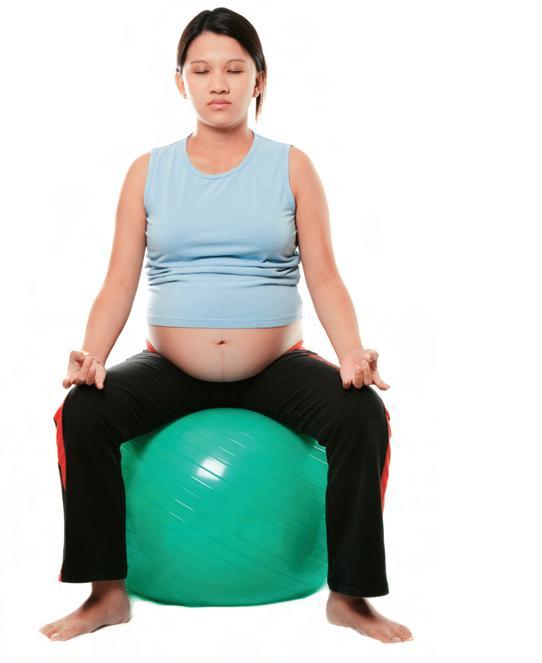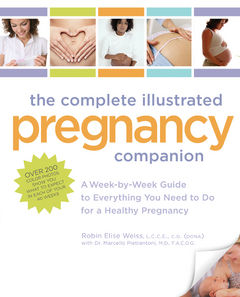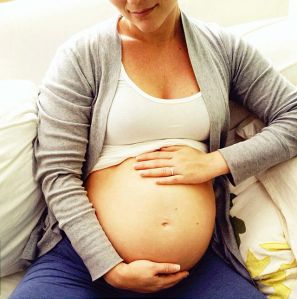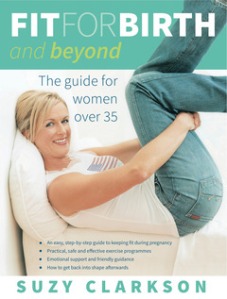Sometimes we hear that biological clock pounding so loudly that it’s hard to ignore. If you’ve opted to wait for some, Emily Bartlett and Laura Erlich, authors of Feed Your Fertility, have have some great insight into some of the concerns that people have.
These days, many women earn graduate degrees, pursue careers, or simply wait for the right partner before settling down to get married and/or have families.
While we’re all for women’s rights, there is one unfortunate hitch in this plan: biology. Realistically, many women in their 40s will have a heck of a time getting pregnant because that’s how most of us are genetically programmed. Painful as it might be, it’s helpful to consider that women who conceive naturally later in life are the exception to the rule—outliers, if you will.
If you are struggling with fertility in your late 30s or 40s, you don’t have a disease. Your body is going through the normal functions associated with your age. Despite the inevitable aging timeline, there are ways via both science and nature to improve your pregnancy odds.
What the West Says
The media shows us attractive women in their late 40s happily pushing infant twins in a stroller on the way to the park and presents research indicating that older women will have smarter and healthier babies. What tabloids don’t reveal, however, is how many cycles of IVF failed before a successful pregnancy occurred, how much medication the mother needed to inject and ingest, how many tens of thousands of dollars had been spent, and if these babies were born via donor egg, donor sperm, and/or a gestational carrier to host the pregnancy.
Reproductive medicine can be a miracle of science, but it is an extremely expensive (and often emotionally draining) miracle, yielding lower and lower margins of success with each passing year of age.
That said, we believe that knowledge is power. We recommend that all women over the age of 40 who have been trying for more than three months seek a Western workup with a reproductive endocrinologist to rule out potential obstacles to conception—whether hormonal or structural. It is better to do this at the outset, rather than allowing precious time to go by.
Some conditions (such as fibroid removal) can take several months in the healing process, so determining and treating any issues detracting from your fertility right away may make a big difference in your success.
Genetics and Epigenetics: Why Some “Older” Women Can Conceive and Others Cannot
How long we are able to procreate is different for every person. Just because your best friend’s sister-in-law’s cousin got pregnant at 48 doesn’t mean we all can. Trying to change your genetics around your fertility is as futile as trying to have blue eyes just because someone else does.
What we can influence, however, is epigenetics. Epigenetics is defined as the way our genes express themselves. This emerging field is providing more and more evidence that the things we do, like how we eat, think, and feel, can actually influence the way our genetic predispositions play out. For example, just because you have a family history of breast cancer doesn’t mean you are doomed to develop this disease yourself.
Likewise, while your waning fertility may be a natural part of your genetic programming, you can slow this process a bit and optimize pregnancy outcomes by making smart choices in how you choose to live your life.
Changing your diet, lifestyle habits, self-care routines, and stress levels can go a long way toward turning back the biological clock. Regardless of whether or not you end up having a biological child, these methods will only bring you better health and vitality, which is what you need to be a parent, biological or otherwise.
What the East Says
While Western medicine has very little to offer in terms of turning back your biological clock, Chinese medicine can help to breathe hope and inspiration into the space where your odds seem to decline with each passing month. Chinese medical texts say that pregnancy should be possible from the onset of our first period (menarche) through the very last (menopause).
With that in mind, let’s examine how Chinese medicine can help to optimize fertility through influencing epigenetics well into your later reproductive years.
Depending on a woman’s reproductive profile, Chinese medicine can often dramatically slow down and sometimes even reverse ovarian decline. We have personally assisted many patients with “rebooting” their ovaries, which can increase follicle count, improve responses to fertility drugs, and result in more pregnancies (natural or assisted) and fewer miscarriages.
Having a healthy, regular menstrual cycle is the cornerstone of improving fertility health, and Chinese medicine shines when it comes to this. Using herbs and acupuncture to regulate and support the cycle, women may find themselves ovulating and menstruating more regularly, experiencing less pain and clotting, feeling less PMS, having better cervical fluid at ovulation, and experiencing an improved libido.
Beyond the mere functionality of your reproductive organs and hormones, Chinese medicine can help you to cultivate fertility in your entire being, so that you can approach your baby-making journey from a place of feeling already fulfilled by your life, rather than trying to fill an empty space in your heart with a baby.
Do you want to make a healthy baby and have a healthy pregnancy?
Are you interested in a holistic approach to fertility?
Do you need to optimize your fertility due to your age or health conditions?
Are you trying to conceive and experiencing challenges?
Very few women and men expect to have trouble when it comes to having a family, and coming up against obstacles can bring about epic levels of stress. Deciding what steps to take can be absolutely baffling.
The good news is that Feed Your Fertility is here to help you. Inside, fertility professionals and authors Emily Bartlett and Laura Erlich will guide you on a path to making the nutritional and lifestyle changes you need to help support healthy fertility and pregnancy. Inside you’ll learn:
How your lifestyle may be inhibiting your ability to conceive – and what to do about it
Why popular fertility diets may be leading you down the wrong road
What foods to eat to optimize and nourish your fertility, and how to adopt a real foods diet
How to determine your personal health imbalances that may be interfering with your fertility
How to use Chinese medicine to bring your body into balance and improve your odds of conception
How to streamline your supplements and take only what you really need
Your natural and medical treatment options for common fertility issues
How to navigate the medical fertility world and when to seek help
Get your pregnancy on track the natural, time-tested way and enjoy your journey to motherhood with Feed Your Fertility.








